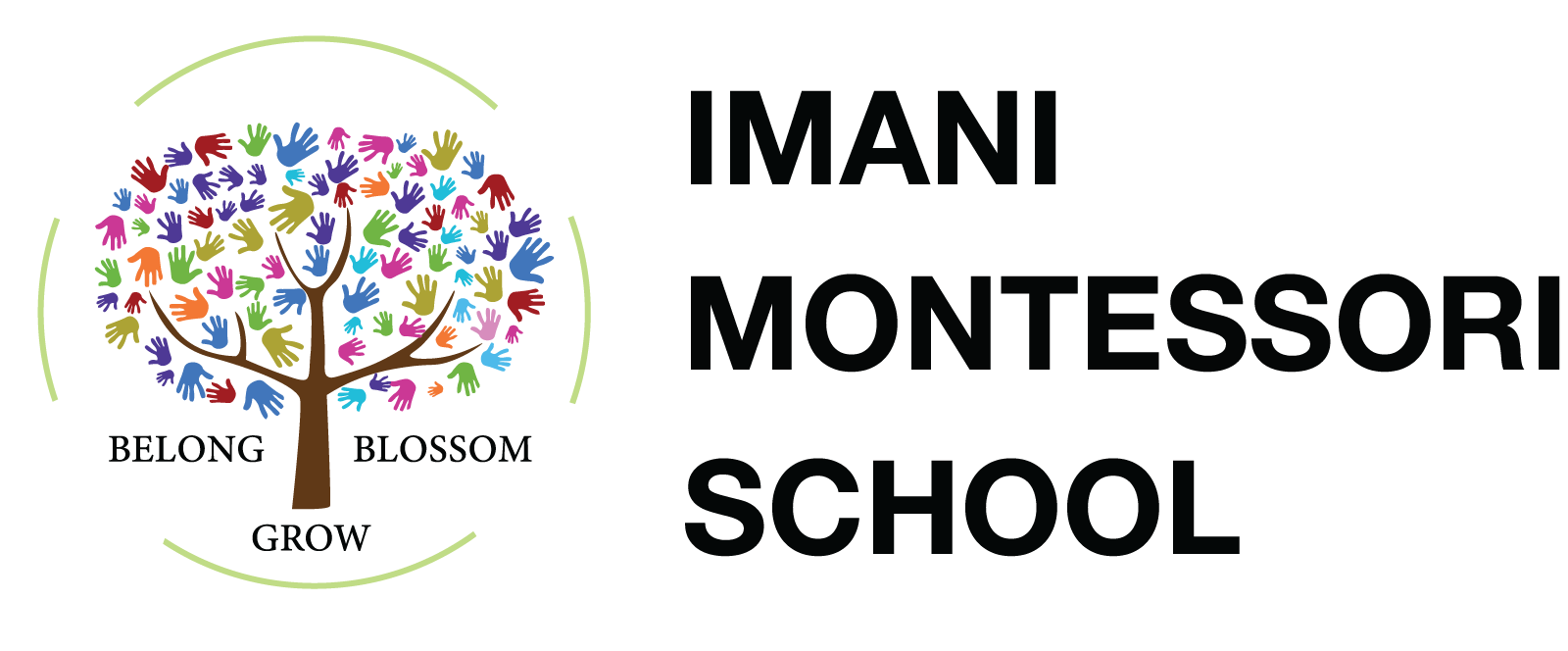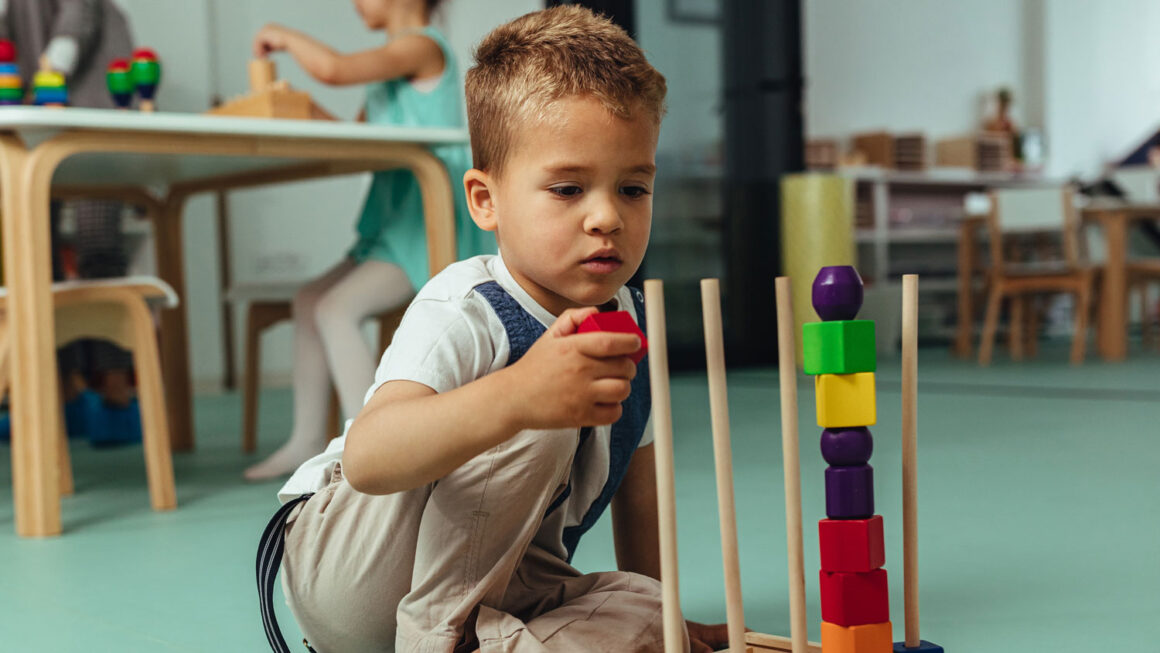If you’ve ever peeked through the doorway of one of our Montessori School kindergarten classrooms during the morning work cycle, you might be surprised. It doesn’t look like a “lesson” in the traditional sense. There’s no teacher at the front talking to the whole class at once. Instead, you’ll see children scattered across the room, some seated at child-sized tables, some kneeling on mats, others quietly moving between shelves and workspaces. One child might be carefully pouring water from one glass jug to another, another building a tall tower of pink wooden cubes, while a third is laying out sandpaper letters in neat rows.
To an unfamiliar eye, it may look casual, even unstructured. But in reality, what you’re seeing is a deeply intentional environment designed to allow children to learn at their own pace, one of the central principles of Montessori education.
The rhythm of the child, not the clock
In many conventional classrooms, the day is divided into short, timed segments. Every child does the same activity at the same time, regardless of whether they are ready to begin, still absorbed in what they were doing, or already finished. In Montessori, the schedule looks different. We begin the morning with a timed uninterrupted work cycle. Within that time, children choose activities from the shelves based on their current interests and developmental needs.
This doesn’t mean “anything goes.” The choice is guided by the child’s abilities, prior presentations from the teacher, and the clear boundaries of the prepared environment. A child might work with the same material for ten minutes or for an hour. If they need to repeat an activity ten times to master it, no one tells them to stop and move on, because repetition is how deep learning happens.
Respect for the developmental journey
A Montessori education recognizes that children develop in unique ways and on unique timelines. A 4-year-old might be immersed in early reading activities, while another is still refining fine motor control through Practical Life exercises like spooning beans or buttoning fabric frames. One is not “ahead” and the other “behind”, they are simply in different places on their journey.
When we allow children to progress at their own pace, they are more likely to experience mastery before moving on to the next challenge. That mastery builds both skill and confidence. The reverse, pushing a child ahead before they’re ready, often creates frustration and anxiety, while holding a child back can dampen curiosity and motivation.
The teacher’s role: quiet guide, careful observer
In our Montessori classrooms, the teacher is not the center of attention but the center of observation. Rather than directing the whole class, they work with individuals or small groups, presenting new materials when the child shows readiness. Readiness is determined not by age alone but by close observation: Has the child shown sustained focus in a related activity? Have they mastered the prerequisites? Are they showing signs of curiosity about the next step?
In between presentations, the teacher moves quietly through the room, offering subtle support, a whispered reminder to roll up a mat, a gentle nudge to return work to the shelf, a question that invites a child to think more deeply.
The work behind the calm
“Learning at their own pace” doesn’t mean “doing only what’s easy” or “avoiding challenge.” Montessori materials are sequenced so that each new presentation builds on what came before, stretching the child just enough to keep them engaged without overwhelming them. A child pouring beans today may be grinding spices in a mortar next week, then measuring ingredients for baking a month later, each step increasing complexity and skill.
Because the child chooses the work, they engage with a sense of ownership. And because the work is meaningful, they are motivated from within, not by external rewards or threats. This intrinsic motivation is one of the most powerful outcomes of Montessori education.
Life beyond the classroom
When parents first hear “at their own pace,” they sometimes worry: Will my child be ready for primary school if we don’t keep them “on track” with a standard curriculum? The answer is yes, and more. Montessori children not only meet academic benchmarks, they often surpass them in areas like concentration, independence, problem-solving, and social skills.
The ability to self-pace isn’t just an educational advantage, it’s a life skill. In the real world, projects don’t always have clear-cut instructions and fixed timelines. Success often depends on the ability to plan, focus, and persist through challenges, exactly the abilities children strengthen in a Montessori classroom.
Parents are encouraged to continue the principle at home, allowing children time to dress themselves even if it takes longer, involving them in real household tasks, and creating quiet moments for them to follow their own interests without constant adult direction.


Join the Conversation